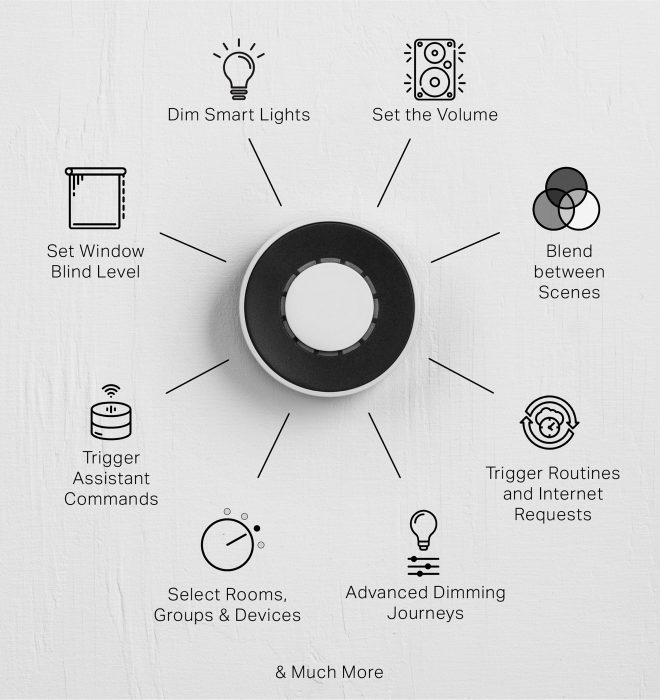

I was in the beta and they were very smart folks working well with us. Flic made this hub so I git in early on the indiegogo and am very happy I did.

It worked great but occasionally went offline. Originally I made my own flic hub from a raspberry pi because flic made a library and released it open to easy implementation. Zigbee is better on battery life but nobody has created one small enough that I like and I would have to put in more repeater zigbee devices in my home to make the mesh work well. I begged them to make a zwave version but they didn't, I think battery life on zwave is an issues. The flic buttons are the size of a quarter. They are not bad but much larger than the flic buttons. I also don't like the form factor of these buttons you referenced. I have two smartthings presence sensors and one smartthings plug I use to extend the signal for these presence sensors. I forgot to mention I don't have a strong zigbee mesh network. There is no need to go out to the web to have them integrate with each other.

HE is a local network Hub, that's one of it's main advantages. I need to look into webCoRE more but the point here is I would like to avoid the WEB. Contains: 1x Flic Twist Sticker Sheet l White, 1x Flic Twist Sticker. The icon sticker-pack add-on comes with a wide variety of 52 different icons to help visualize your scenes. Again much like HE has already done for the Phillips Hue Hub. When using the Scene Blender or Selector it can be helpful to visualize the scenes or functions that have been set to different positions. So basically I am aware of my options to get this all working I was just thinking that it would be nice to get a fully integrated solution into the platform so future users would just have it when they purchased both a HE hub and a Flic Hub. However since HE runs locally already I think it could either expose an api itself or it could just work out an implementation with the flic hub. Flic can make authenticated calls but I had a lot of issues getting that to work so I hacked a solution by writing a server that accepted unauthenticated calls (made on my local network) and passed along the authenticated request to the cloud. SmartThings actually exposes a web based API that is authenticated. But I never said my Flic implementation was using groovy code.
#Flic twist code
You probably will be able to just move your groovy code to Hubitat, making just a few changes. If that seems to insecure even though it is inside my LAN then a better approach would be if flic and hubitat worked together to make a formal integration. Since hubitat runs local, if it had an api that also worked local I could remove the requirement for the middle server and just make calls from flic hub to the hubitat. Trying to get the authentication working in Flic Hub wasn't working so I created this middle server. SmartThings provides an API and I have integrated my Flic Hub by writing a raspberry pi based local server in my home which accepts the local http requests from the flic hub and passes them onto the Authenticated SmartThings API. Unless Hubitat has an API so flic can call that API how would the http protocols of these two devices let me integrate them without the need for a third party like IFTTT?


 0 kommentar(er)
0 kommentar(er)
